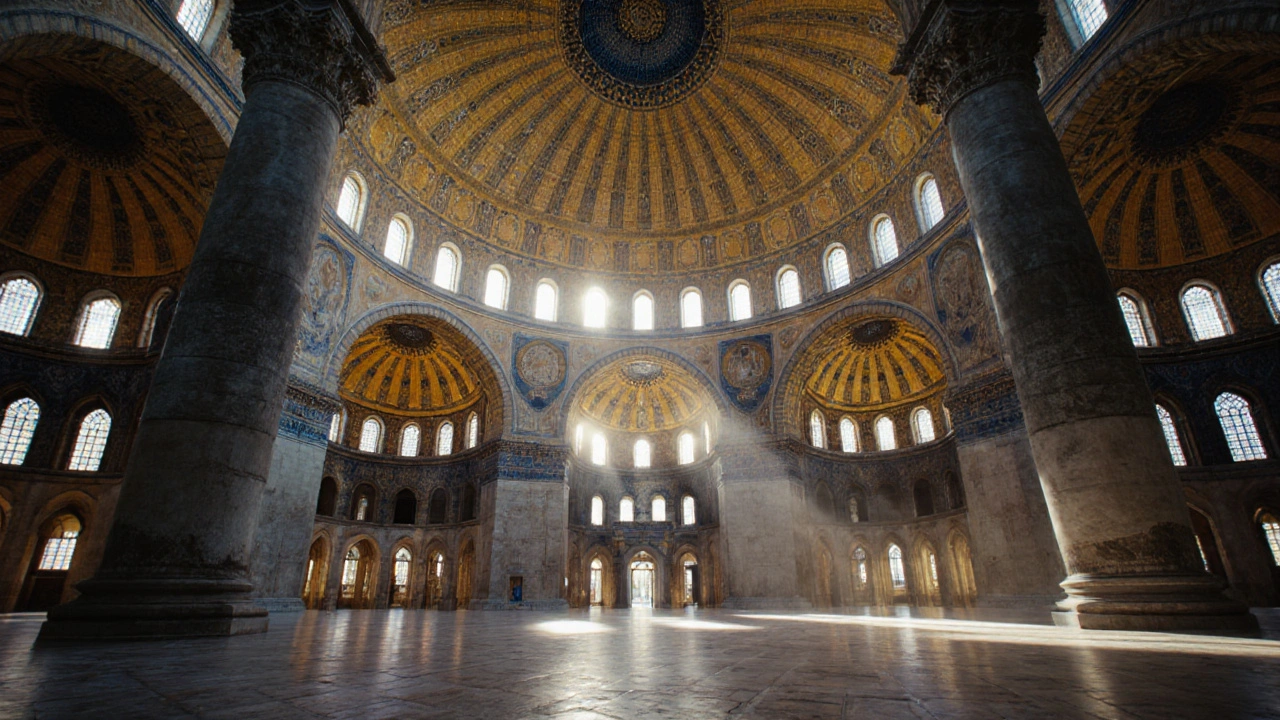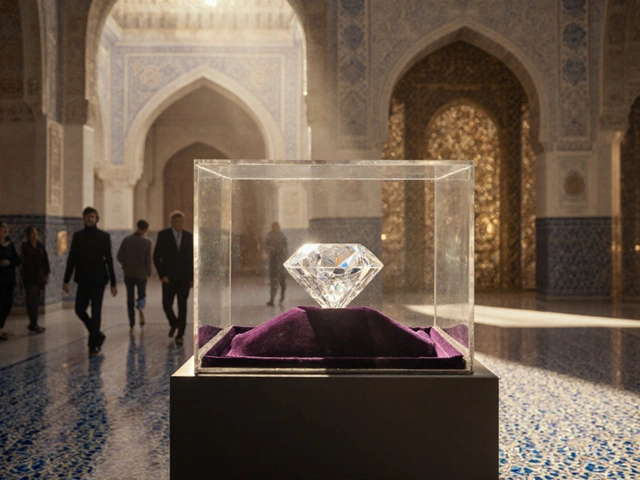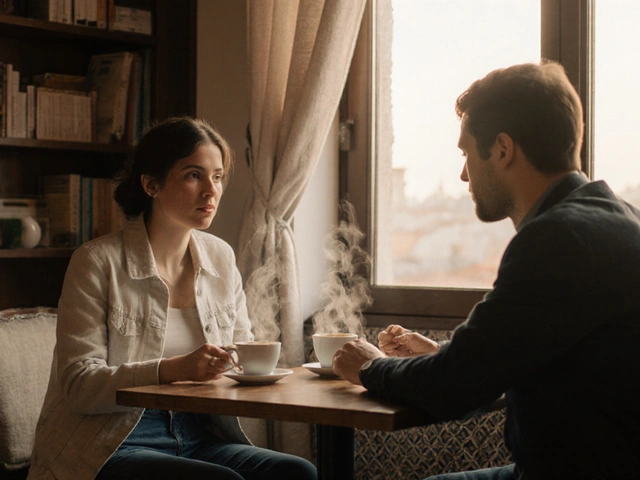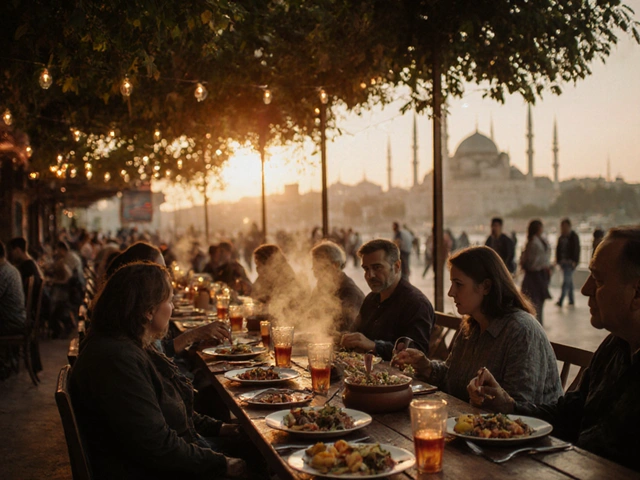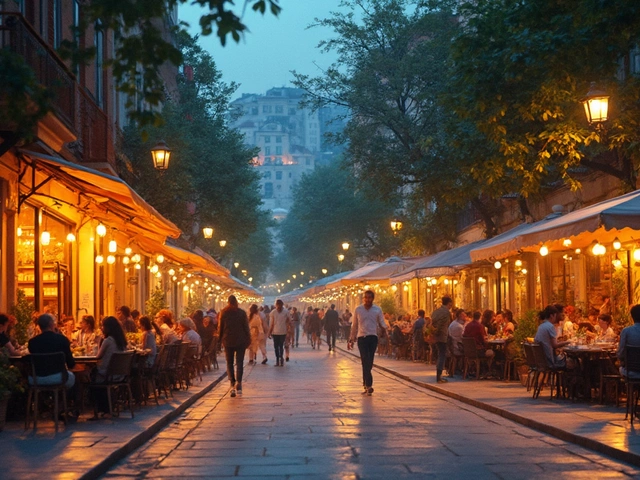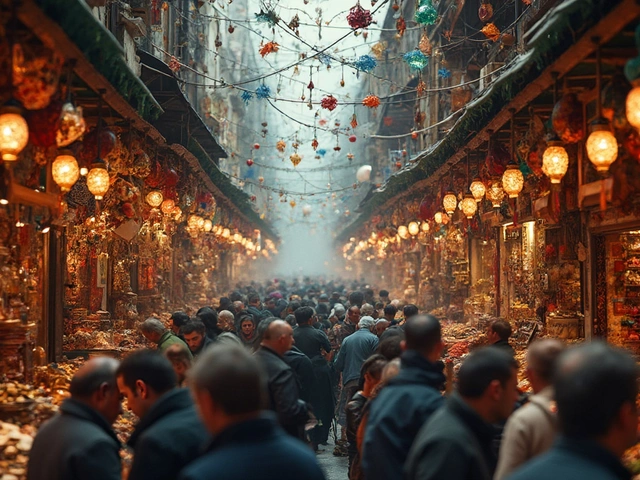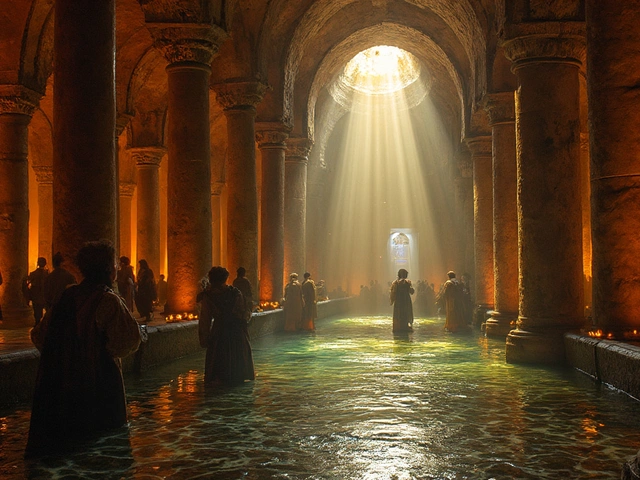When you walk through the streets of Istanbul, you’re not just walking through a city-you’re walking through layers of empires. Every cobblestone, every arch, every dome tells a story older than most nations. And if you’ve lived here for years or just landed at Atatürk Airport, you’ve probably missed something truly extraordinary. Not the crowded viewpoints at Galata Tower or the souvenir stalls along the Spice Bazaar, but the quieter, deeper marvels that shaped this city’s soul. These aren’t just tourist spots. They’re architectural miracles that still hold power today.
Hagia Sophia: Where Faith and Stone Converged
The moment you step inside Hagia Sophia, the silence hits you first. Then the light. Sunlight spills through 40 windows around the dome, making the golden mosaics glow like embers. Built in 537 AD under Emperor Justinian, it was the largest church in the world for nearly a thousand years. Its dome-31 meters across and 55 meters high-seemed to float above the floor. Engineers back then didn’t have steel or computers. They used brick, mortar, and sheer ingenuity. The weight of the dome was balanced by four massive pendentives, a revolutionary design that later inspired mosques from Samarkand to Delhi.
Today, it’s a mosque again, but the Christian mosaics are still visible under protective panels. Locals know the best time to visit is early morning, right after the Fajr prayer. The crowds are thin, the air still cool, and the echoes of centuries feel alive. If you’ve only seen it in photos, you haven’t seen it at all. The scale, the acoustics, the way the light shifts through the day-it’s a sensory experience no camera can capture.
Topkapi Palace: The Sultan’s Secret World
Topkapi isn’t just a palace. It’s a city within a city, built on the Seraglio Point where the Bosphorus meets the Golden Horn. For nearly 400 years, it was the center of the Ottoman Empire. You won’t find grand ballrooms here. Instead, there are intimate courtyards, kitchens that fed thousands, and harem quarters where women shaped politics from behind veils.
Walk through the Fourth Courtyard, past the Pavilion of the Holy Mantle, where the Prophet Muhammad’s cloak and sword are kept. The walls here are lined with tiles from Iznik-ceramic masterpieces with cobalt blue and coral red patterns that haven’t faded in 500 years. The treasury holds the Spoonmaker’s Diamond, a 86-carat stone rumored to have been bought by a beggar who found it in a trash heap. That’s Istanbul: magic hiding in plain sight.
Locals often skip the main entrance and enter through the quieter Gate of Salutation, near the Istanbul Archaeology Museums. You can spend half a day here without seeing everything. Don’t rush. Sit on a bench near the Imperial Harem gardens. Watch the light fall on the marble fountains. This isn’t a museum. It’s a living memory.
Blue Mosque: When Power Wore a Turban
Just across from Hagia Sophia, the Sultan Ahmed Mosque-known as the Blue Mosque-was built in 1616 to rival its neighbor. Six minarets, a rarity at the time, announced the Sultan’s ambition. Inside, more than 20,000 hand-painted Iznik tiles cover the walls, each one unique. The blue? It’s not paint. It’s glaze fired at 1,300°C, made with cobalt oxide from Persia. The light filters through 260 stained-glass windows, casting patterns that shift with the sun.
What most tourists don’t realize: this mosque was designed for prayer, not photos. The floor is covered in thick carpets donated by pilgrims over centuries. Locals remove their shoes and walk barefoot on the cool surface, even in winter. If you visit during prayer time, you’ll hear the call to prayer echo off the dome, a sound that’s been unchanged since the 17th century. Don’t just take pictures. Stand still for a minute. Let it sink in.
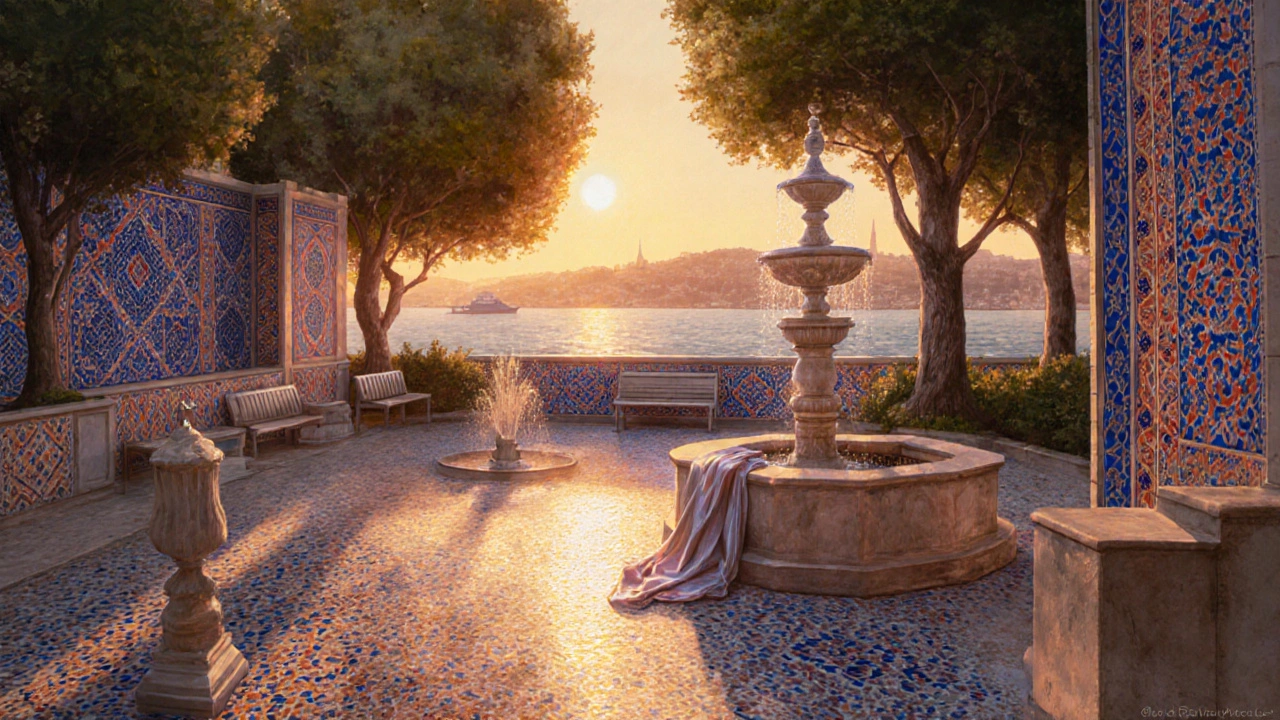
Chora Church: The Forgotten Masterpiece
Most visitors never make it to Kariye Museum, tucked away in the Edirnekapı neighborhood. But if you want to see the finest Byzantine mosaics and frescoes outside of Ravenna, this is where you go. The church was built in the 4th century, expanded in the 11th, and reborn in the 14th under the patronage of Theodore Metochites, a scholar and statesman who poured his fortune into its decoration.
The mosaics here aren’t just religious. They’re emotional. Christ as the Pantocrator gazes down with piercing eyes. The Virgin Mary holds her child, her expression both tender and sorrowful. Scenes from the life of Christ unfold like a medieval graphic novel-each panel detailed, each face alive. The colors? Still vibrant. The gold leaf? Still gleaming. You can see the brushstrokes of artists who worked 700 years ago.
It’s quiet here. No tour groups. No loudspeakers. Just the rustle of leaves in the courtyard and the occasional muezzin’s call from a nearby minaret. Locals know this place as a sanctuary. If you’re tired of the crowds in Sultanahmet, come here. Sit on the stone bench near the entrance. Let the silence speak.
The Walls of Constantinople: A 1,600-Year-Old Shield
Most people think of Istanbul’s walls as ruins. But the Theodosian Walls are one of the most complex defensive systems ever built. Stretching 6.5 kilometers from the Sea of Marmara to the Golden Horn, they withstood 37 sieges-including the Arab assault in 717 and the Crusaders in 1204. The walls weren’t just stone. They had towers every 50-70 meters, moats 20 meters wide, and inner and outer ramparts with staircases for soldiers to move quickly.
Walk the stretch between the Gate of Charisius and the Gate of St. Romanus. You’ll see where the Ottomans breached the walls in 1453 with cannons that fired 600-kilo stones. The damage is still visible. Local historians say the stones used in the walls came from quarries near Silivri, shipped by barge along the Marmara coast. Today, the walls are being restored by the Ministry of Culture, and volunteers often join clean-up days on weekends. Bring water. Wear good shoes. This isn’t a theme park. It’s a monument to survival.

Yedikule Fortress: Where Emperors Were Held-and Forgotten
Built into the Theodosian Walls, Yedikule means “Seven Towers.” It started as a gate, became a prison, and later held the last Byzantine emperors before they were executed. Inside, you’ll find cells where dignitaries were locked away, their names carved into the stone by desperate fingers. One cell still has a small window facing the sea. Legend says the last emperor, Constantine XI, looked out from here the night before the city fell.
Today, it’s a museum with eerie displays: chains, broken crowns, and Ottoman-era documents. But the real magic is outside. Climb to the top tower. The view stretches from the Sea of Marmara to the Princes’ Islands. On a clear day, you can see the smoke from the ferry chimneys near Kadıköy. Locals come here on Sundays to picnic on the grass. Bring a çay, a simit, and sit quietly. You’re standing where history turned.
Why These Places Still Matter
Istanbul’s historical sites aren’t just relics. They’re alive because people still use them. People pray in the Blue Mosque. Students sketch in the Chora Church. Families picnic at Yedikule. The walls aren’t frozen in time-they’re being repaired, studied, loved.
If you’re new to the city, don’t just check off the big names. Go deeper. Visit the lesser-known sites when the light is soft. Talk to the guides who’ve worked there for 30 years. They’ll tell you which mosaic was restored in 1986, which tile was replaced with a copy from the same kiln in Iznik, which stone came from a quarry now under a highway.
These places aren’t just about the past. They’re about identity. In a city that’s constantly changing-new cafes in Beyoğlu, high-rises in Levent, apps replacing the old market stalls-these buildings remind us who we are. They’re not just architecture. They’re memory made stone.
Are these historical sites open to visitors every day?
Most major sites like Hagia Sophia, Topkapi Palace, and the Blue Mosque are open daily, but hours vary. Hagia Sophia opens at 9 AM and closes at 7 PM in summer, 5 PM in winter. Topkapi closes on Tuesdays. Chora Museum and Yedikule are open 9 AM-5 PM, closed on Mondays. Always check the official Ministry of Culture website before visiting, as hours can change for religious holidays or maintenance.
Is it better to visit these sites with a guide or alone?
You can explore alone, especially at quieter sites like Chora or Yedikule, where the atmosphere speaks louder than any tour script. But for Hagia Sophia and Topkapi, a local guide makes a huge difference. They’ll point out details you’d miss-the hidden face of a saint in a mosaic, the way the light hits the throne room at exactly 10:15 AM. Many guides are trained by the Ministry of Culture and speak fluent English, German, or French. Avoid street touts. Book through official tourism offices or trusted platforms like Istanbul Tourist Guide Association.
What’s the best way to get to these sites without getting stuck in traffic?
The best option is the tram. Take the T1 line from Kabataş to Sultanahmet-it stops right at Hagia Sophia and the Blue Mosque. For Topkapi, walk from Sultanahmet Square in 10 minutes. To reach Chora Church, take the Marmaray to Yenikapı, then a short taxi or bus ride. For Yedikule, take the Marmaray to Yedikule station. Avoid driving. Parking is nearly impossible in the historic peninsula, and narrow streets are not designed for cars. Use public transport or walk. You’ll see more that way.
Can I take photos inside all these sites?
Yes, but with limits. Photography is allowed in most areas, but flash and tripods are banned. In the Blue Mosque and Hagia Sophia, avoid photographing worshippers during prayer times. In the treasury rooms of Topkapi, some artifacts are protected by glass with anti-reflective coatings-photos won’t turn out well anyway. The best shots are taken early morning or late afternoon when the light is soft and crowds are thin. At Chora, use a wide-angle lens to capture the full mosaics. And never use drones-flying over historical sites is strictly forbidden.
Are there any hidden historical sites near Istanbul that locals love?
Definitely. Head to the Princes’ Islands-especially Büyükada, where you’ll find the 10th-century St. George Monastery, perched on a hill with views over the Sea of Marmara. Or visit the ruins of the Church of St. Mary of the Mongols in Fatih, one of the few Byzantine churches that never became a mosque. In the Asian side, the Fener Greek Orthodox Patriarchate and the nearby St. Stephen’s Church are quiet, powerful places. Locals also love the ancient aqueducts in Silivri and the rock-cut churches in the Black Sea region, like those in Amasra. These are off the tourist radar but rich in history.
If you’ve never walked the walls at dawn, or sat in the Chora Church as the sun hits the mosaics just right-you haven’t really known Istanbul. These aren’t just places to visit. They’re places that visit you.
